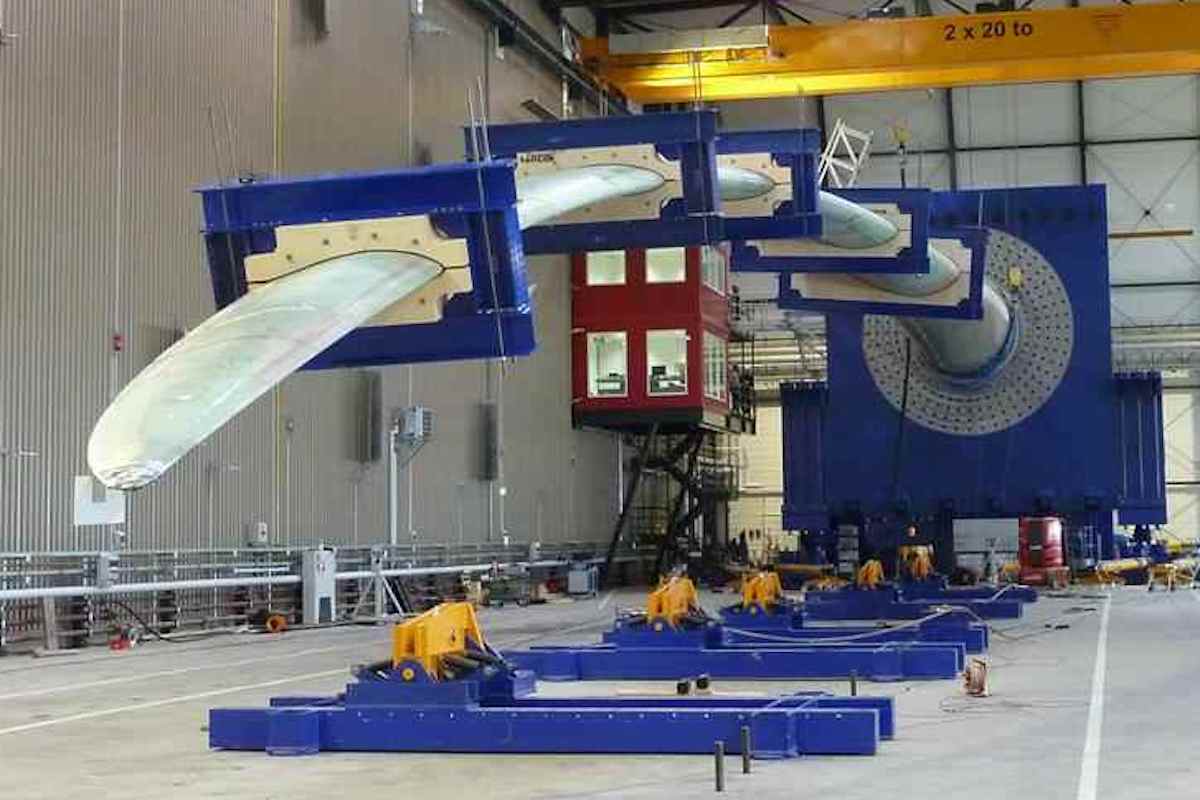Credit Points
depending on PO
The course Wind Energy Technology I (WET I) is the first of two modules that introduce to the technology and functionality of wind turbines. In this first part we teach the fundamentals of wind energy technology. The module is subdivided into lectures, tutorials, an additional unmarked achievement and a one-day excursion (on voluntary basis).
The course is offered in winter and summer semesters. It gives students the opportunity to gain insights in one of the faculty's research focuses. In summer, the course is given in English.
On voluntary basis, IWES offers one-day excursions in the framework of WET I. In winter semesters, we usually visit the Fraunhofer Institute for Wind Energy Systems IWES in Bremerhaven. Students have the opportunity to gain insights to the impressive testing infrastructure with the rotor blade test rig and the Dynalab, a unique testing facility for drive trains.
A detail worth mentioning is the visit of the prototype of the former world's largest offshore wind turbine, the Adwen AD 8-180, with a rated power of 8 MW and a rotor diameter of 180 m, which is operated by Fraunhofer IWES as a research turbine.
The course WET I gives insights into manifold competences in the area of wind energy technology. After successful completion, the students are able to
The lecture of WET I contains the following topics:
In the tutorials of WET I, students immerse themselves in the lecture topics. The tutorials contain interactive units, in which students solve problems independently with supervision, and units in the CIP pool. For the CIP pool units, specific previous software skills are not required.
As a compulsory additional unmarked achievement, students carry out home exercises in the frame of self-studies. These are checked via online multiple choice questionnaires accompanying the lectures and tutorials. This enables students to track their own learning progress. At least half of the questions need to be answered correctly.
To successfully complete the course, students have to pass an oral exam. The oral exam has a duration of approximately 20 minutes. In the oral exam, students need to explain the theoretical background of the different topics that are discussed in the lectures and the tutorials. Theoretical derivations are also part of the oral exam.
Students have to register to the exam in due time at Akademisches Prüfungsamt (APA). In addition to the oral exam, students need to complete the unmarked achievement, for which online registration is also required.
Changes in the Master's studies "Energy Technology": Students receive 5 CP. In order to reduce the work load respectively, one topic is excluded in the oral exam. Details are communicated during the lectures.


 ©
Silvio Matysik / wind-turbine-models.com
©
Silvio Matysik / wind-turbine-models.com


 ©
Silvio Matysik / wind-turbine-models.com
©
Silvio Matysik / wind-turbine-models.com


 ©
Fraunhofer IWES
©
Fraunhofer IWES


 ©
Fraunhofer IWES
©
Fraunhofer IWES


 ©
FBG / C. Bierwagen
©
FBG / C. Bierwagen


 ©
Silvio Matysik / wind-turbine-models.com
©
Silvio Matysik / wind-turbine-models.com


 ©
FBG / C. Bierwagen
©
FBG / C. Bierwagen